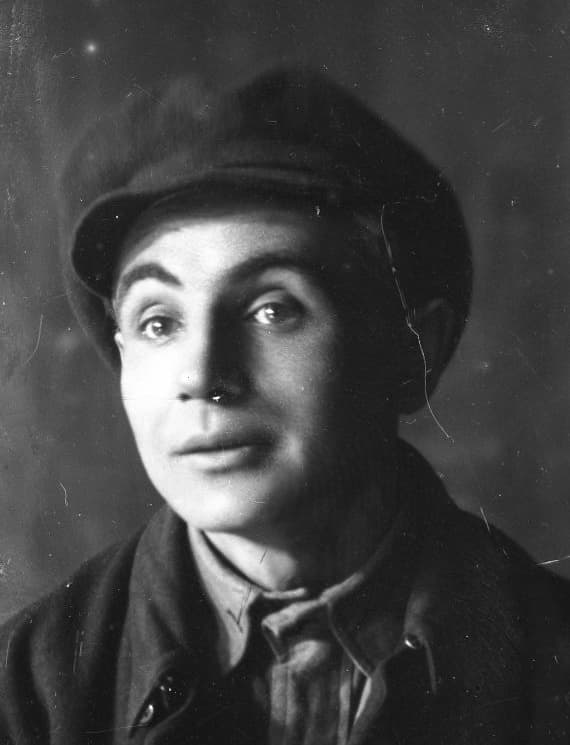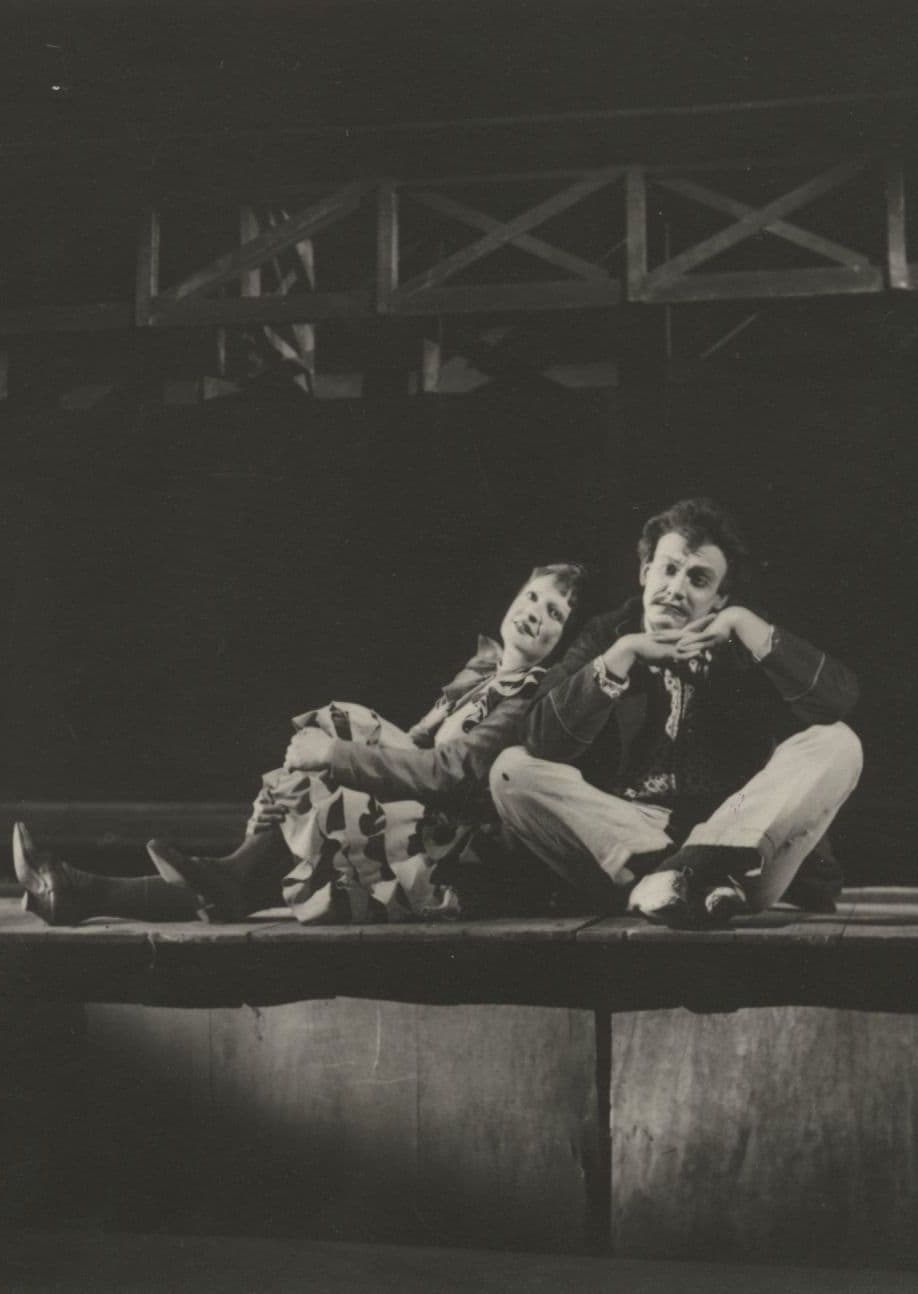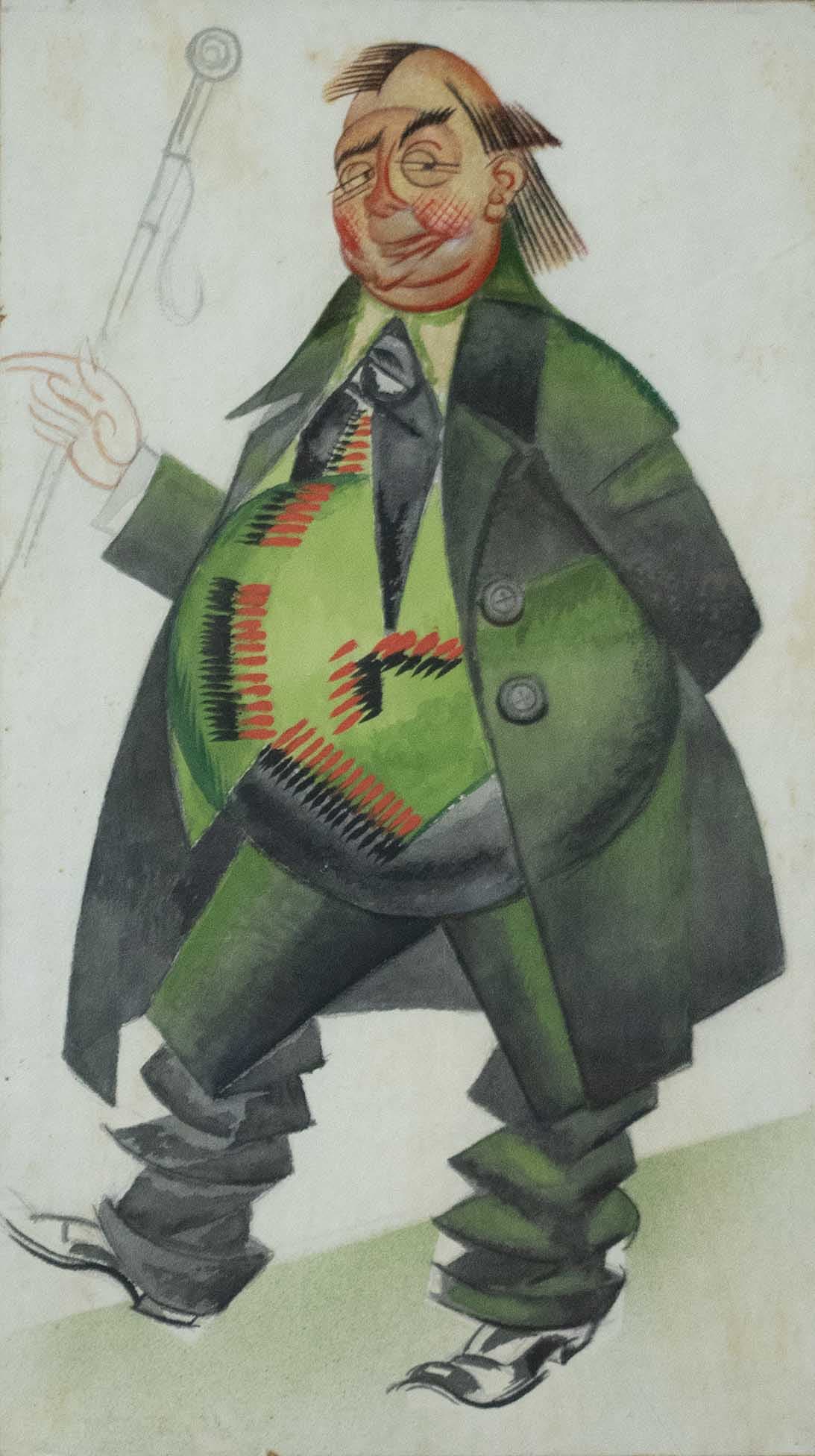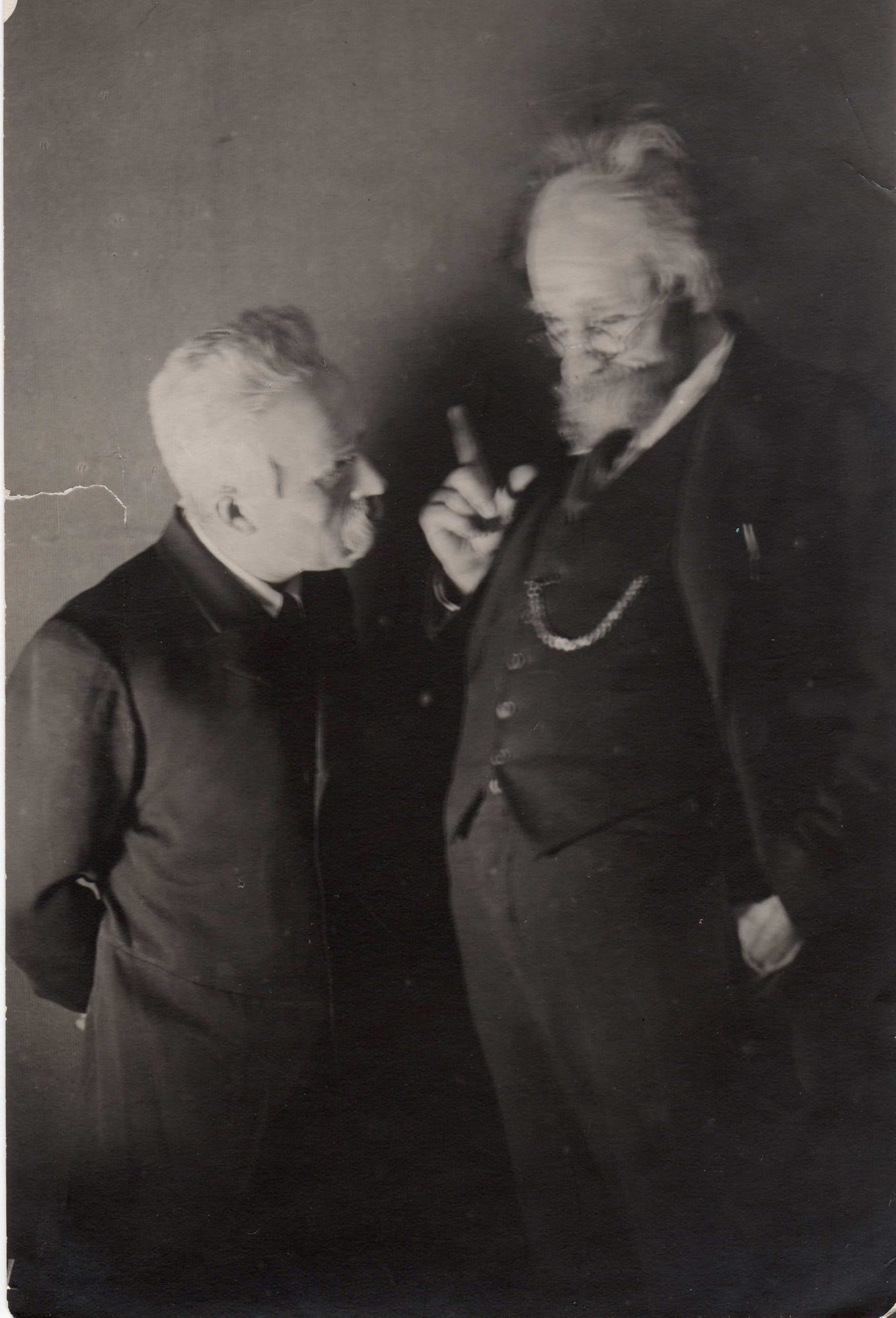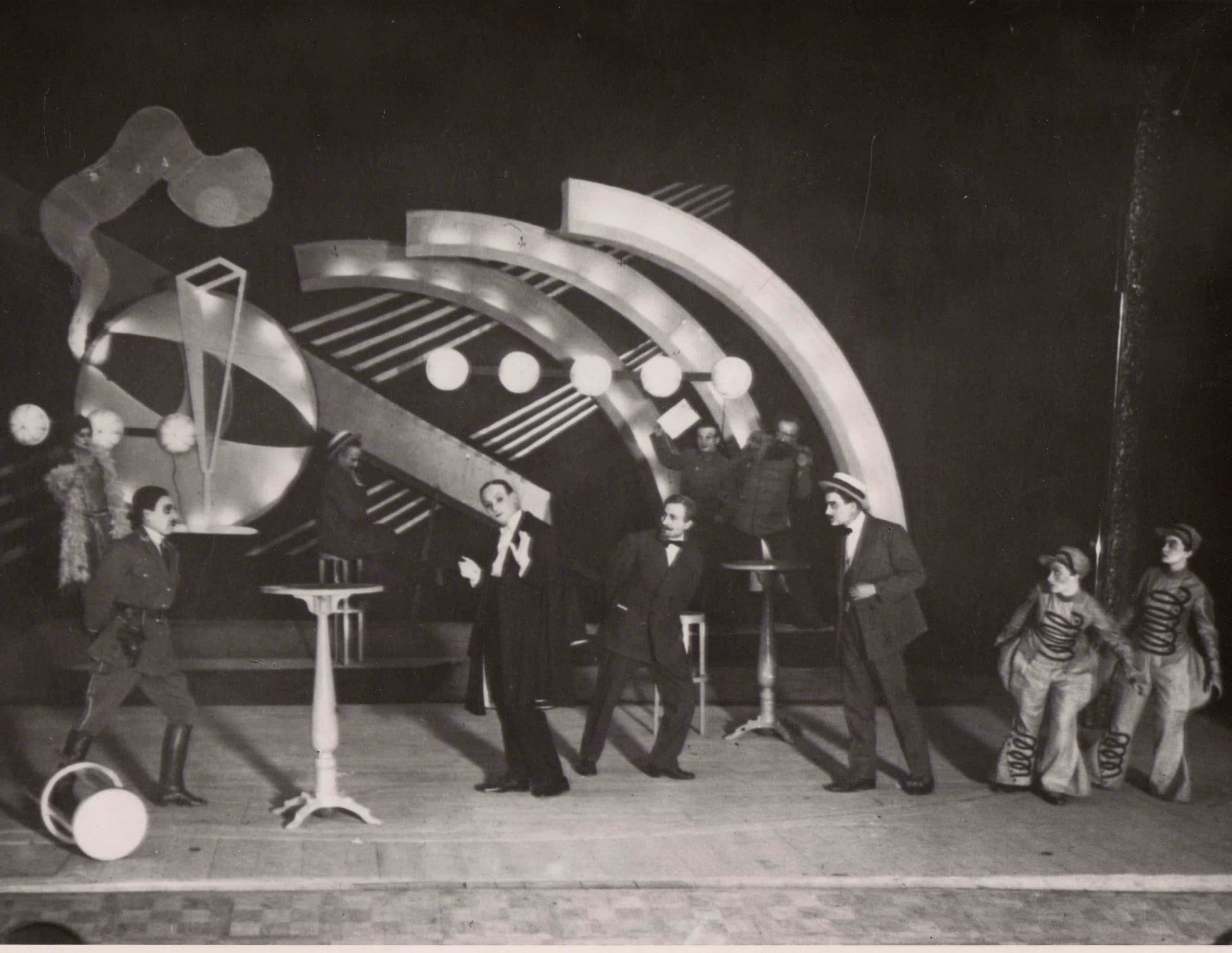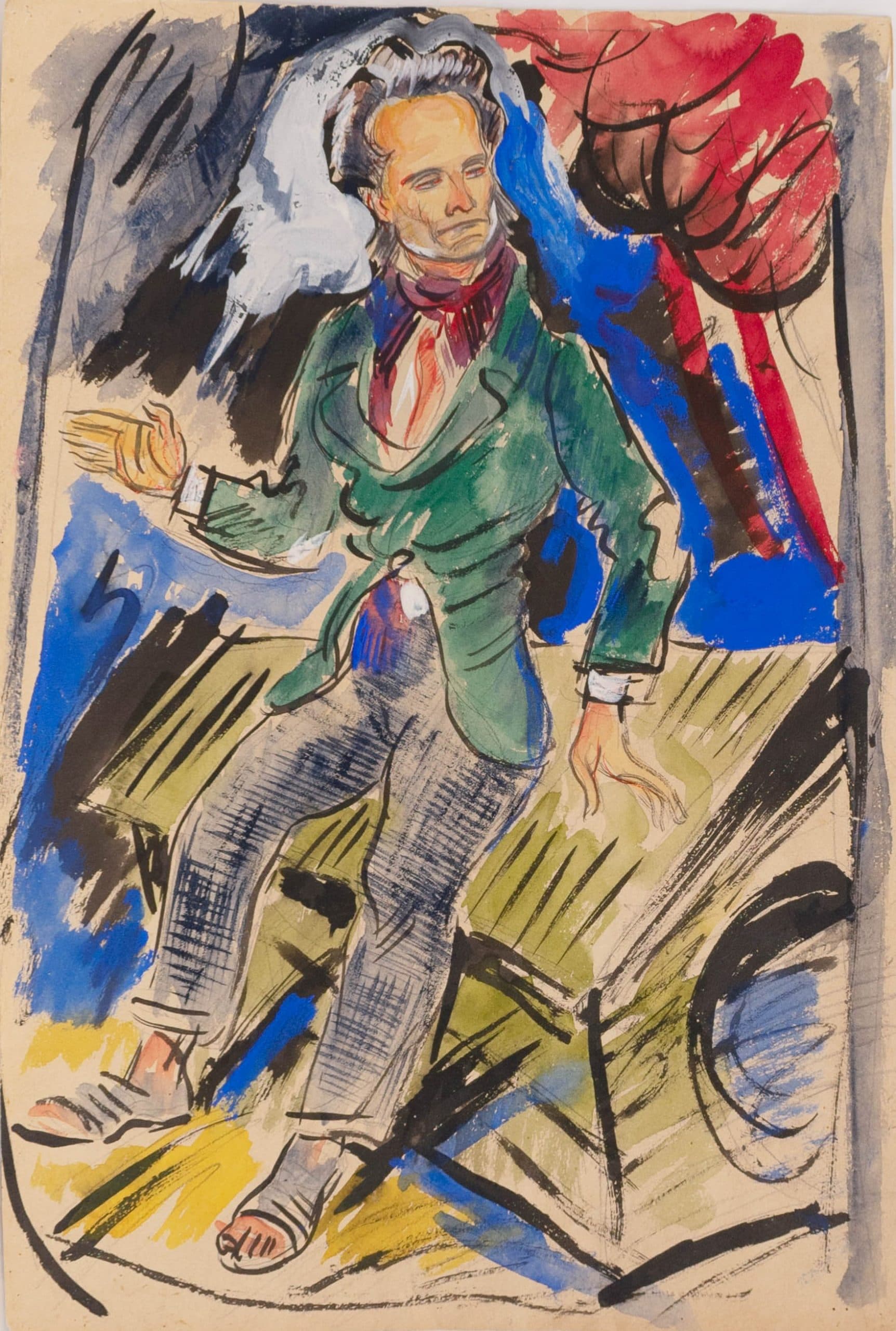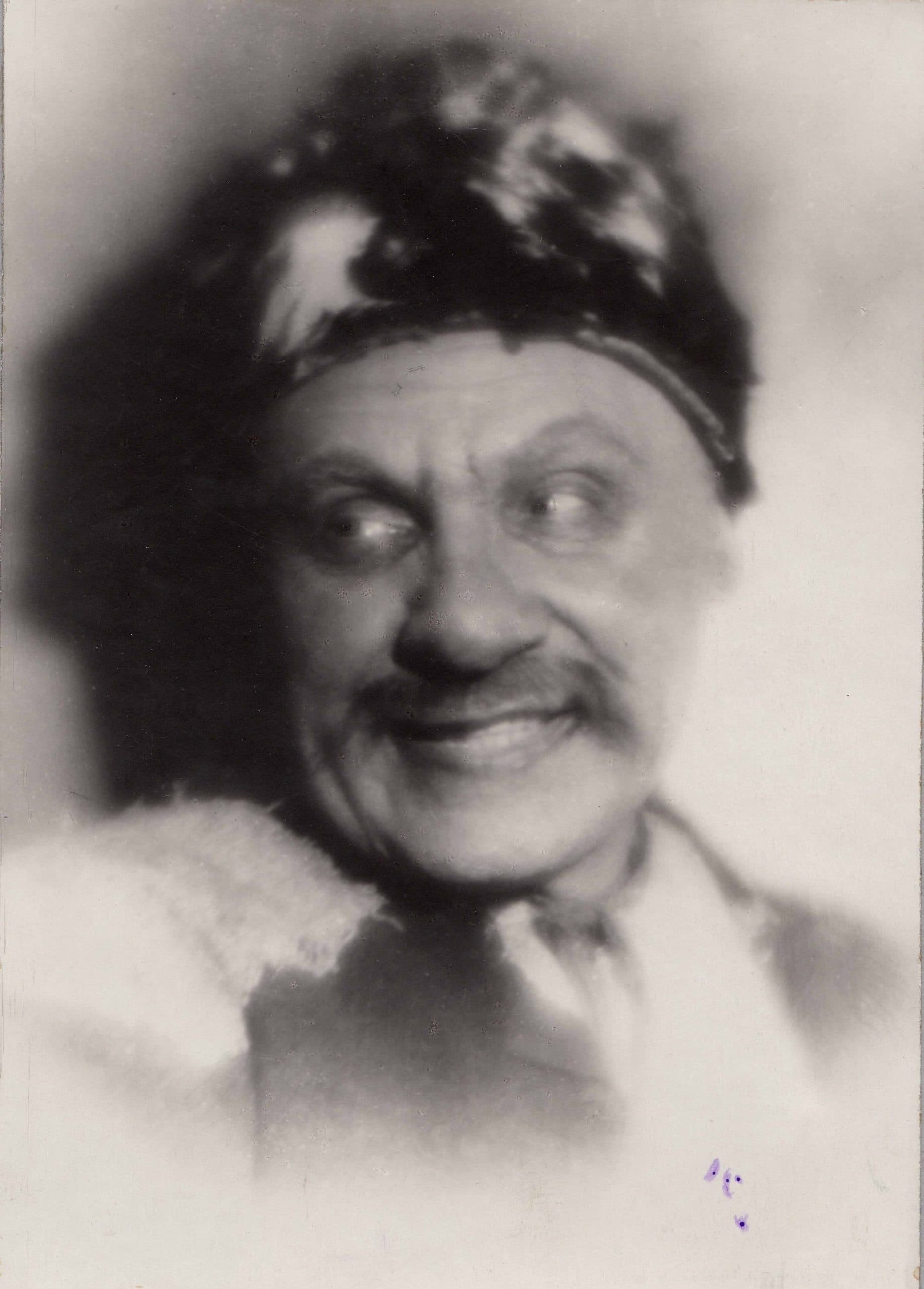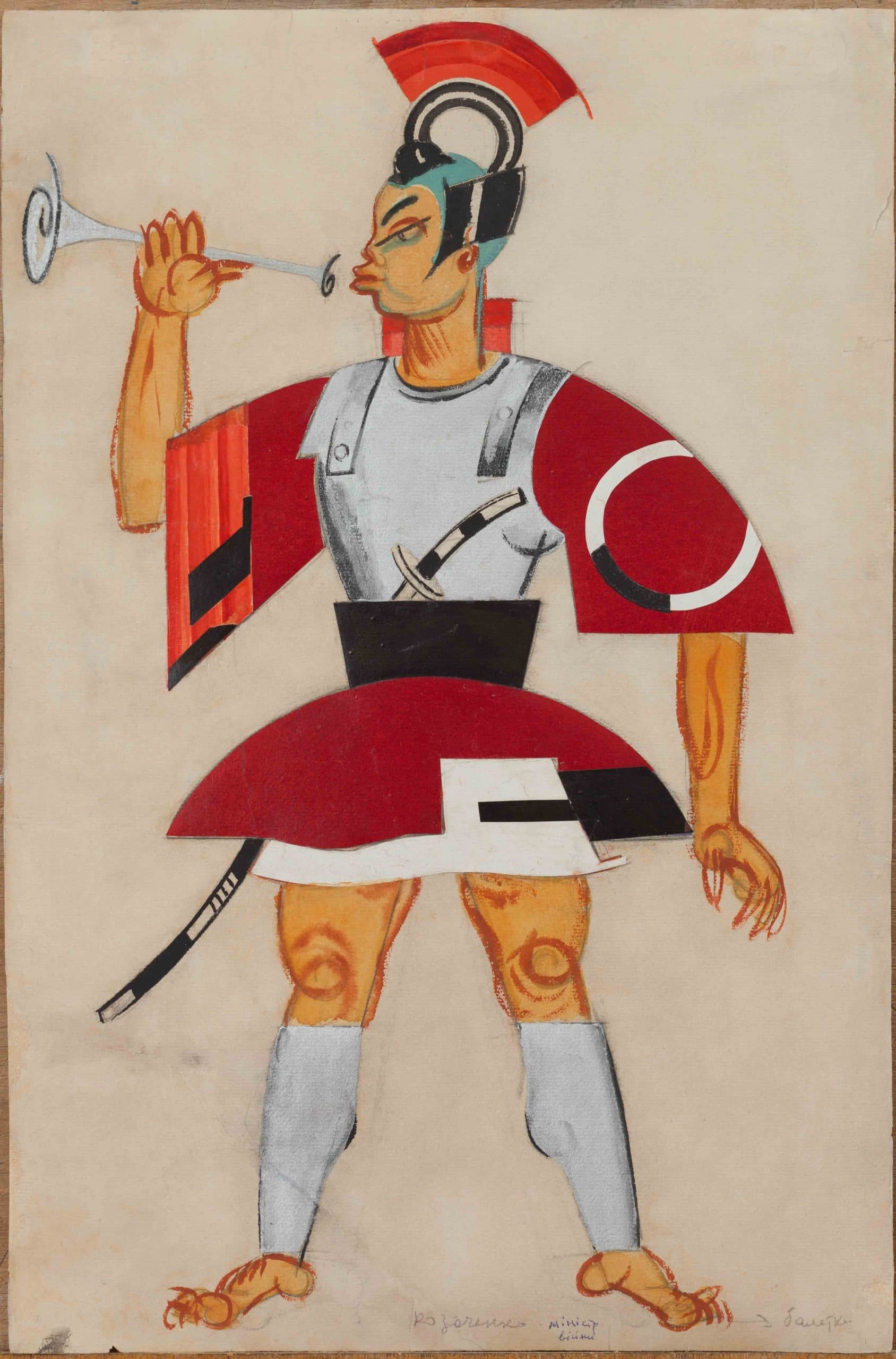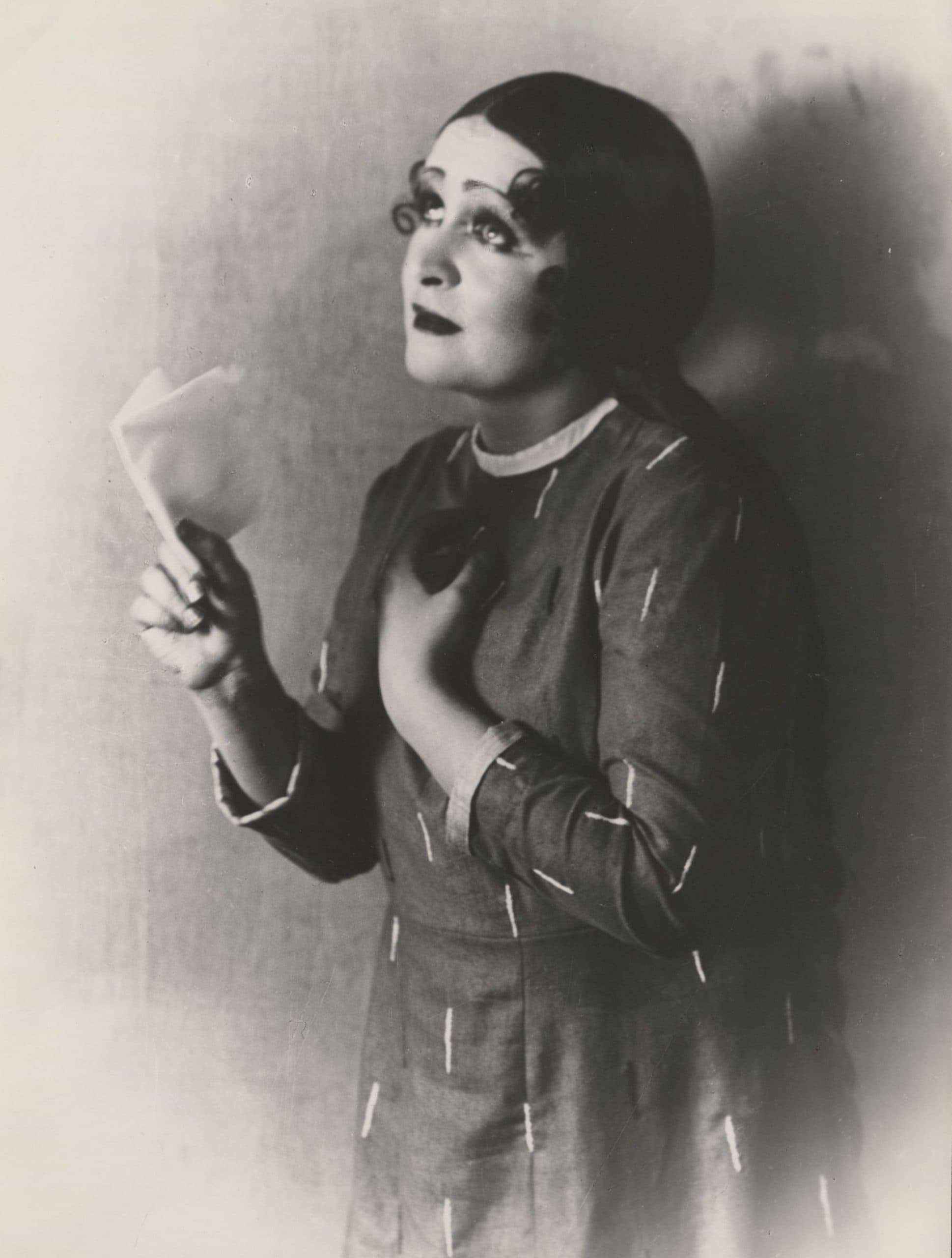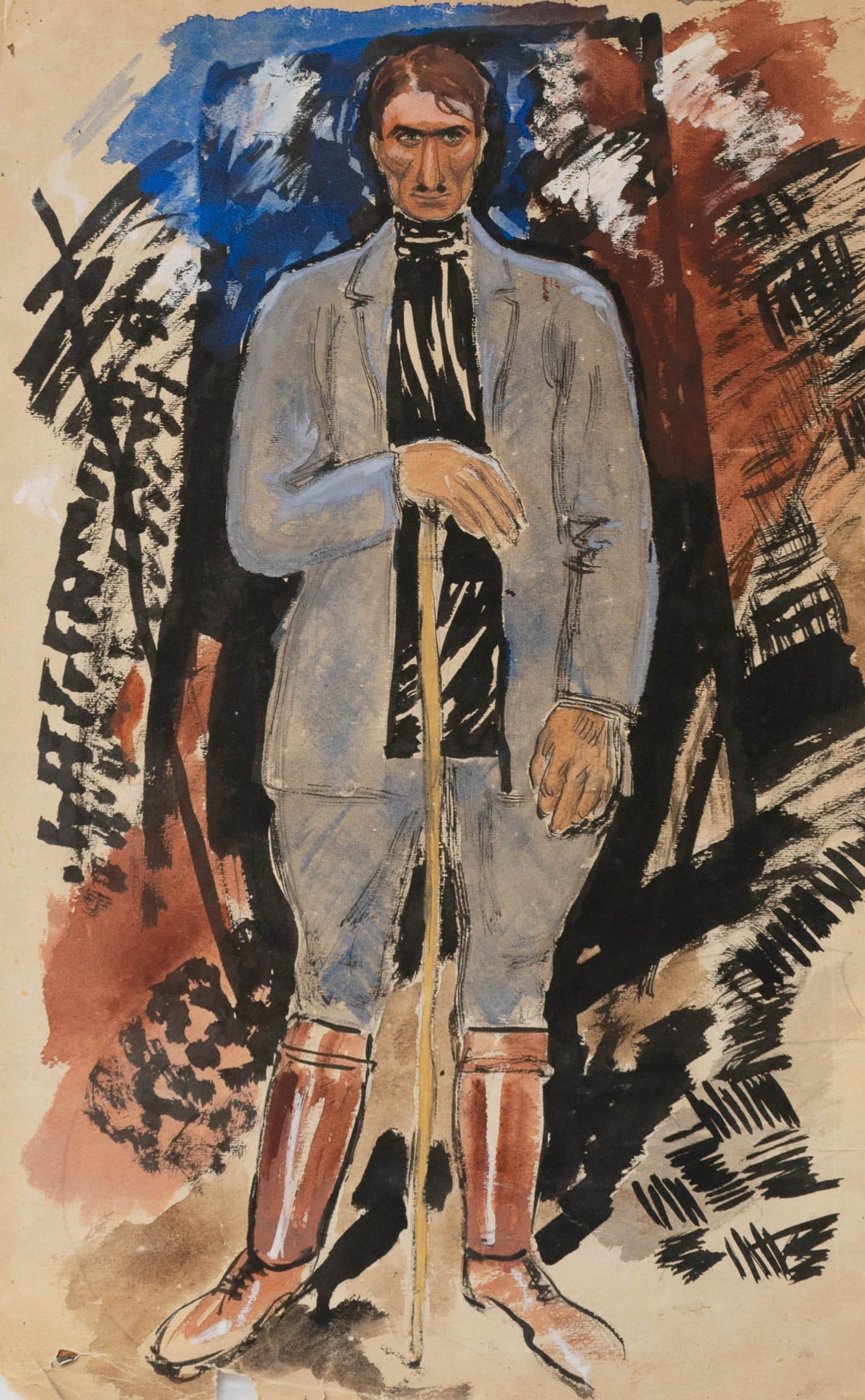Berezil Theater was the official name of the Berezil Artistic Association starting in spring 1926. According to the decision of the All-Ukrainian Theater Council, the Berezil Theater moved to Kharkiv (the then capital of Ukraine) and was under the directorial leadership of Les Kurbas from 1926-1933. Berezil opened its first season in Kharkiv on October 16, 1926 with the premier of Fernand Crommelynck’s Golden Guts, directed by Les Kurbas. Despite high expectations, Golden Guts wasn’t accepted by the audience and the party leadership alike and fueled heated debate. Yurii Sheveliov recalled: “If the play was to be a challenge to Kharkiv it was only check – the Kharkiv audience responded with mate. The play was boycotted, the hall was almost empty, there were just twelve performances in two weeks, after which it was never shown again.”
The new working conditions for the repertoire theater, the audience’s rejection of experimental shows, and political demands by the authorities forced Les Kurbas to alter Berezil’s repertoire policy and overall character. The theater’s posters now featured mostly Soviet dramas (Ivan Dniprovskyi, Vsevolod Ivanov, Myroslav Irchan, Mykola Kulish, Ivan Mykytenko, Leonid Pervomaiskyi). The revolutionary-themed plays Prologue (originally called On the Eve) and Haidamaky were revived, the propaganda show October Review (1927) and (as demanded by the time) one-day performances Birth of a Giant and Lady Comrades (both 1931) were shown. To attract large audiences, the theater put on entertaining shows: The Mikado operetta, Hello, This is Radio 477 musical, and others.
Berezil’s directors are mainly students of Kurbas’s Kyiv directorial school: Favst Lopatynskyi (Sava Chaly by Ivan Karpenko-Karyi (1927)), Borys Tiahno (The King Amuses Himself by Victor Hugo (1927) Armored Train 14-69 by Vsevolod Ivanov (1928)), Yanuarii Bortnyk (Apple-Blossom Captivity by Ivan Dniprovskyi (1927)). They were joined by director and actor Valerii Inkizhynov from Moscow (Sadie by James Colton and Somerset Maugham (1926), and The Mikado adapted by Arthur Sullivan (1927)). Starting in 1930, the younger generation of Kurbas’s directorial students staged the most shows – Borys Balaban (Bridgehead by Myroslav Irchan (1932)), Leontii Dubovyk (97 by Mykola Kulish (1930)), Cadres by Ivan Mykytenko (1931), Monsieur de Pourceaugnac by Molière (1933)), Volodymyr Skliarenko (Mr. Ralko’s Testament by V. Tsymbal (1930), Unknown Soldiers by L. Pervomaiskyi (1930), The Master by Ivan Karpenko-Karyi (1932)), among others.
Les Kurbas’s five shows in Kharkiv can be considered the top artistic achievements by Berezil and Ukrainian theater of the 1920s-30s: Golden Gut (1926), The People’s Malakhii (1928), Myna Mazailo (1929), Dictatorship (1930), Maklena Grasa (1933). The director’s co-creators were artists Vadym Meller and composer Yulii Meitus. The leading roles were played by Amvrosii Buchma, Yosyp Hirniak, Marian Krushelnytskyi, Natalia Uzhvii, Valentyna Chystiakova, Stepan Shahaida, and others.
As a creative organism, the Berezil Theater was organizationally integrated into the Soviet culture and propaganda system. Its actors took part in various propaganda activities, including a trip in 1930 that was part of a political and cultural event related to the construction of the Dnipro Hydroelectric Power Plant. Berezil toured in Odesa (1928, 1929), Kyiv (1929), Georgia (1931), but, unlike other leading Soviet theaters, they never went abroad to Moscow or Leningrad.
Due to organizational changes in Berezil, Kurbas’s teaching activities focused on the studios at the theater, and his influence on the Ukrainian theatrical process became more significant. On his initiative and under the patronage of him and his students, new theaters of various genres were opened (the Happy Proletariat theater of small forms, musical comedy theater, puppet theaters). Kurbas’s students, students of the Berezil studios, former Berezil actors and directors – Andrii Avramenko (Irii), Borys Balaban, Vasyl Vasylko, Mykhailo Verkhatskyi, Hlib Zatvornytskyi, Hnat Ihnatoych, Yukhym Lishanskyi, Favst Lopatynskyi, Serhii Karhalskyi, Zinaida Pihulovych, Borys Tiahno – worked in theaters and cinemas across Ukraine.
The influence of Berezil and its artistic director during the theatrical disputes of 1927-1929 was manifested in Kurbas’s close contacts with the literary and cultural circles of Kharkiv and his involvement in VAPLITE. However, starting in 1929 the theater’s artistic practice, aesthetic and thematic priorities receive sharp criticism from the authorities and cultural and artistic opponents – the organizations VUSPP and New Generation. The criticism is followed by mass protests against Berezil and the removal of The People’s Malakhii from its repertoire.
The ban on Kurbas’s final show Maklena Grasa (1933) was the boundary between relative artistic freedom and totalitarianism. After the decision of the People’s Commissariat of the UkrSSR on October 5, 1933 to remove Kurbas as director of the theater he created, his student Marian Krushelnytskyi, a director and actor, took over running Berezil. In 1935 the Berezil Theater was renamed the Taras Shevchenko Kharkiv Theater and some of the leading actors moved to the Ivan Franko Theater in Kyiv.
In 1987, on the 100th anniversary of the birth of Les Kurbas, the Berezil Small Stage was opened at the Taras Shevchenko Theater in Kharkiv.
